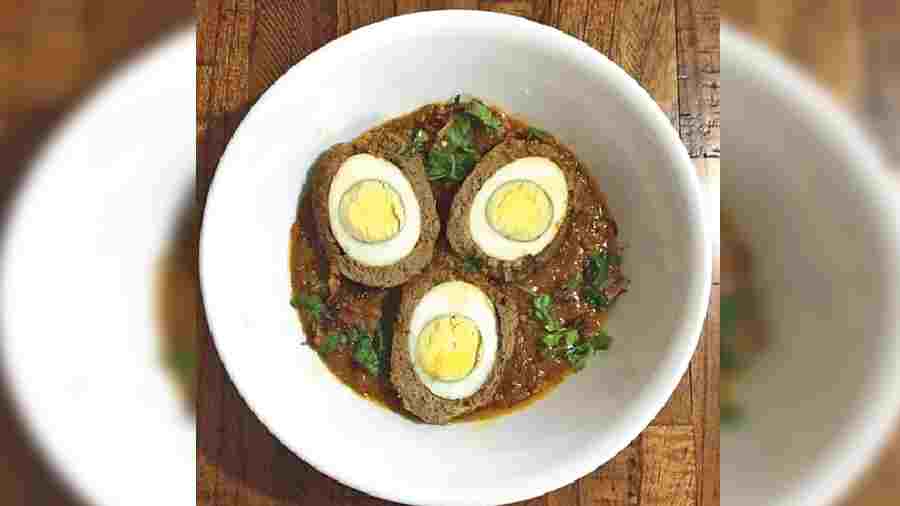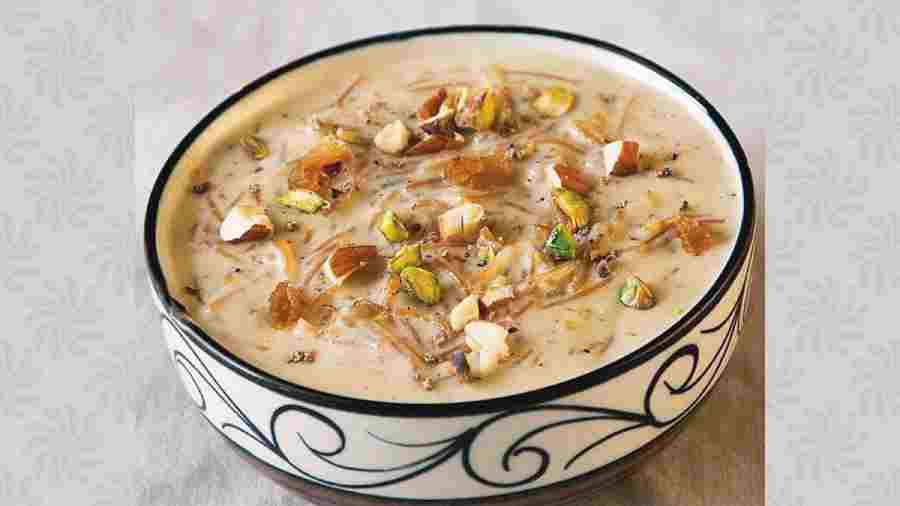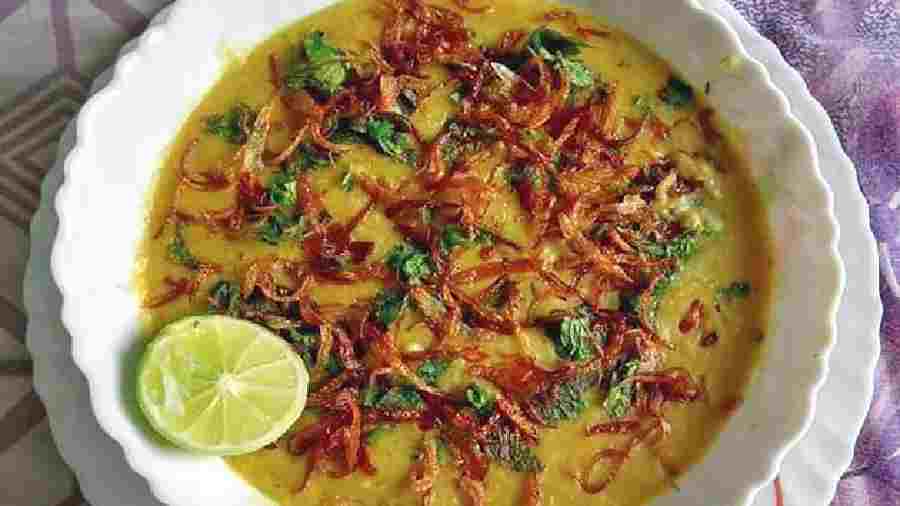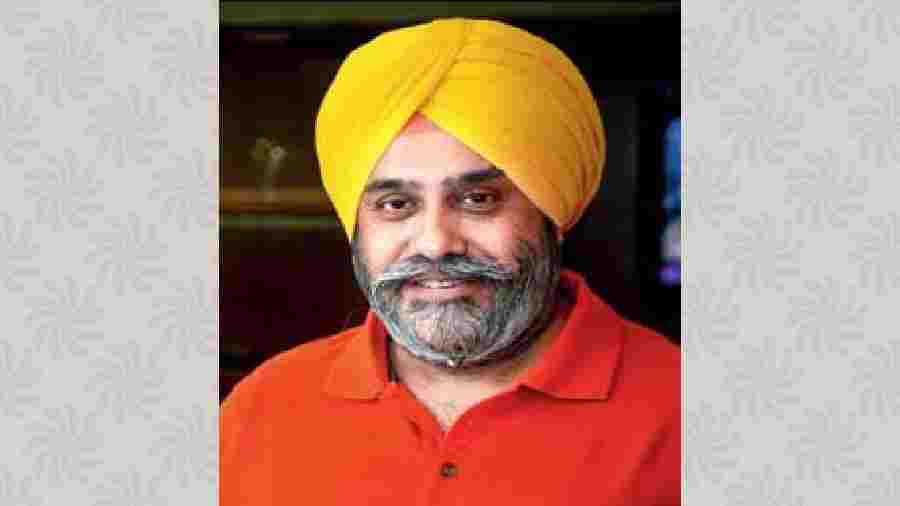Awwal Allah Noor Upaya Qudrat Keh Sub Banday,
Aik Noor Keh Sub Jag Upajiya Kaun Bhale Ko Mandhe
(God created light of which all the beings were born and from this light, the universe; so who is good and who is bad).
These lines by Kabir-ji which have been beautifully sung by the legendary Sufi singer Nusrat Fateh Ali Khan have been etched in my mind and resonated within me throughout my childhood, and I have tried to explain the above lines, but there are some things in life which should be left to be felt and understood on their own, rather than someone trying hard to explain their meaning.
I have spent my childhood in a locality where on one side was a Hindu Family and on the other side was a Muslim Family, and the camaraderie was something I have witnessed and experienced up close. So, I feel disappointed when I hear any news of Hindu-Muslim riots and issues which have become somewhat like a backdrop of our society.
Being close to both Muslim and Hindu families, I was fortunate to understand the nuances and details of each other’s cultures and religious practices and their reasons. So, during Ramzan, we would also come together to host Iftar for our Muslim neighbours. The act of fasting is meant to remind people of the less fortunate and to reinforce the need to be thankful.
Fasting, zakat (charity) and duas (prayers) mark the month of Ramzan, but equally important is the bonding over good food while making lasting memories with our near and dear ones. And that’s why Ramzan is incomplete without iftar — those traditional affairs where friends and family gather to break their fast with dates, fruits, sherbets and traditional delicacies like haleem.
The iftar meals provide an opportunity to relive their heritage through food. Along with favourites like kanjis, kebabs and biryani communities across the country bring to the table a diverse and exciting fare that celebrate their unique cultural influences. During Ramzan, one gets to experience the best of everything. Things that you generally don’t get to have around the year is available get to have during this one holy month.
The succulent aroma of crisp, roasted seviyan or vermicelli going into a pot of boiling hot milk is my best memory of Id, coming from my neighbours house. Though feasting after the month of fasting includes all kinds of snacks and dishes like chaat, dahi vada, sandwiches, kebabs, pulao, biryani, korma and what not, but for a fact I know that no Id celebration is complete without that big bowl of seviyan or Sheer Khurma.
It is the most well-known traditional Id delicacy in the entire subcontinent. This dish is called by many names — in Bangladesh it is called ‘shemai’, or ‘shai mai’ like the Burmese Muslims say in Myanmar, made of sweet vermicelli with milk and dry fruit such as fried cashews, coconut shreds, raisins, etc., is more or less the same seviyan or Sheer Khurma that we are familiar with.
The Id dawat is a one of a kind. It is an occasion when close bonds are formed and one forgets their differences over sumptuous food. It’s not just an opportunity to savour delicacies, but also a chance to experience culture and history as the traditional recipes are often handed down from one generation to another. Normally conversations around Id, are almost always encapsulated by couplets and nazms in favour of the fragrance of Id ki biryani and the timeless seviyan.
However, there can be not even an iota of doubt that these are festive favourites but they are not as universal as you might believe. If you think about entering a Kashmiri Muslim home on Id looking for a sumptuous fragrant biryani, you are likely to be disappointed. But your disappointment will turn into glee on finding luscious Lamb Korma, Rogan Josh and Yakhni. Normally, the understanding of Indian Muslim food is based on the cuisines that used to be made in the royal kitchens of the Muslim dynasties, with special focus on the Mughal kitchen with its Persian influence as these cuisines have been noted down and documented.
Food cooked in homes across the country have generally been ignored as the same has never been celebrated or document. A deeper disquisition of Id cuisine reveals that we have a compounded food culture which has less to do with religion and more to do with local tastes.
For example, in Western India, rice and fish are at the heart of the Kokani Muslim kitchen, and what separates their cuisine is the widespread usage of coconut in various forms. In south India, in most homes, biryani would be served along with dalcha-sambhar cooked with mutton bones and fat.
In the central part of India, if there’s one dish that is always eaten at an Id feast in Bhopal it is the dahi vada. In fact, this is a testimony to the inclusive nature of the celebrations in our country. If you find vegetarian dishes on the Id dawat table, then it is provided to assure that everyone, including guests who were vegetarian, could enjoy the celebratory meal.
Then there are classic, heritage and timeless Id delicacies such as Zameen Doz Biryani, Nargisi Kofta, Gosht Ka Khichda and Keema Fara, which seem to be slowly fading with time. Nargisi Kofta is in the shape of an eye along with white petals and a deep yellow centre, this dish is a mixture of meat and the paste of shami kebab which is wrapped around boiled eggs, and subsequently cooked in korma masala. It resembles a nargisi flower, whereas Keema Fara is a steamed savoury, prepared using fermented dough and is stuffed with minced lamb or chana dal and rolled into dumplings for further steaming.
Then there are delicacies such as talava gosht, Rohini roti, moti pulao, tatti ka gosht, mutabbaq, dum ka keema, Azam Jahi keema, chakna, sufiyani biryani, pasindey, gurde, khichdi keema, original korma roti, bagara khana dalcha, tahari and salan bakhra, that are a key part of our culinary history. We must explore these lost heritage and traditional recipes and pass on to the future generations so that they remain timeless forever.
I think my inkling towards interfaith issues and activities started and the seed was sown during my childhood seeing families of different religions practising their rituals. I was fascinated by the way as to how work and prayer continued throughout the day, hopefully without thinking much of food and water by the person on fast, and this forged a unique sense of bonding among all, at the same time how Hindus used to fast during Navratri leading to Ram Navami, and Christians used to mourn on Maundy Thursday and Good Friday and their after express Joy on Easter on the resurrection of Jesus, the son of God.
Keeping all this in mind, like every year, I have been again fortunate to organise an “Interfaith Iftar”. And the most special thing about it this year was that it was held in the house of the Bishop of Calcutta, a Christian, and hosted by me, a Sikh, who invited people of all faiths and religions to break fast with our Muslim brothers and sisters.
At the Interfaith Iftar, which focused on interfaith dialogue and peaceful coexistence which is the need of the hour, present were representatives from different religious communities and faiths: Rt Rev Paritosh Canning, Bishop of Calcutta; Archbishop Thomas D’Souza, president of United Interfaith Foundation - India; Satnam Singh Ahluwalia, general secretary, Gurdwara Behala and United Interfaith Foundation - India, and chairman IHA Foundation; Arunjyoti Bhikku, director, Tollygunge Sambodhi Buddhist Monastery; Munni Mani Kumar Maharaj (Jain monk); Swami Vedaswarupnanda (Ramakrishna Mission Institute of Culture); Moulana Syed Zaki Hasan Rizvi, Imam e Jumma (Shia Muslim); Nanak Sambtani (Sindhi); J.B. Zafar Ahmed, president of Ahhamidiya Muslim Jamaat Kolkata); Br. Divakar Chaitanya, Central Chinmaya Mission Trust; and others.
This is the India in which I was born and envisioned by the people who brought freedom to our country.
Recipes
Nargisi Kofta

Ingredients
• Eggs: 4, hard-boiled and peeled
• Mutton keema: 500g
• Ginger paste: 2 tbsp
• Garlic paste: 2 tbsp
• Coriander powder: 1tsp
• Turmeric powder: 1tsp
• Kashmiri red chilli powder: ½tbsp
• Garam masala powder: 1tsp
• Corn flour: 1tbsp
• Mustard oil: 2tbsp
• Salt: To taste
#For the gravy
• Curd (dahi): 1 cup
• Onion: 1, chopped
• Turmeric powder: 1tsp
• Green chilli paste: 1tbsp
• Red chilli powder: 1tsp
• Garlic paste: 1tsp
• Ginger paste: 1tsp
• Coriander powder: 1tsp
• Cumin powder: 1tsp
• Garam masala powder: 1tsp
• Homemade tomato puree: 1tbsp
• Kasuri methi (dried fenugreek leaves): 1tsp
• Bay leaf: 1
• Dry red chilli: 2
• Salt: For seasoning
• Oil: As required
Method
• To begin making the Nargisi Kofta Curry recipe, hard boil the eggs in a saucepan with some water. Peel the outer shelf and keep it aside.
• In a food processor blend mutton keema very well to make it soft and tender.
• Transfer it in a bowl, add turmeric powder, red chilli powder, coriander powder, salt, ginger garlic paste, oil, garam masala powder and corn flour. Mix it very nicely using hands.
• Divide the mixture into four parts. Put some oil in your palm and take one portion of keema mixture and pat it to form like a chapati.
• Place a hard boiled egg in between the flatten keema mixture and cover the egg with it. Do the same to all eggs. Keep aside.
• The next step is to prepare the gravy. Heat oil in a big pan or kadai.
• Add dry red chilli and bay leaf. Roast the chillies for a minute then add chopped onions. Fry the onions until light brown.
• Add ginger garlic paste, green chilli paste and fry a little bit. Add tomato puree, coriander, cumin, red chilli and turmeric powder. Fry until the oil separates.
• Whisk yogurt with salt and add in the masala mixture. Mix well and add one cup of warm water. Let it boil.
• After it starts bubbling slowly add keema wrapped egg on the gravy. Let it cook for 30 to 35 minutes.
• After 30-35 minutes check the seasoning add garam masala powder and sprinkle some kasuri methi. Serve hot.

Ingredients
• Milk: 500ml
• Ghee: 2tbsp
• Sugar: 3tbsp, or as required
• Seviyan/vermicelli: ¼ cup broken (I used whole wheat vermicelli)
• Almonds: 10-12, slivered
• Cashews: 10-12, chopped
• Pistachios: 10-12, slivered
• Walnuts: 6-7, chopped (optional)
• Seedless or pitted dates: 5-6, chopped finely
• Chironji/charoli: 1 tbsp
• Golden raisins: 10-12
• Rose water or kewra water
• Milk powder: 2 tsp
• Cardamom powder: ¼tsp
• Nutmeg powder: ¼tsp
• Saffron: 6-7 strands
• Salt: A pinch
• Dried rose petals for garnish (optional)
Method
• Chop all the dry fruits, dates and keep ready for the Sheer Khurma recipe.
• Break the vermicelli with your hand and place aside.
• Pour 1tbsp ghee in a hot pan. Add the broken vermicelli. Saute for 1-2 mins or until they appear golden brown in colour. Remove the sauteed seviyan and place aside.
• In the same pan add 1tbsp ghee along with the chopped dry fruits and pitted, chopped dates. Saute them for 2-3 mins. Remove and place aside with the sauteed vermicelli.
• Heat milk in a saucepan or wide-bottomed vessel. Add 3tbsp sugar or as required. I have added less as the dessert gets sweet with dates and raisins so add sugar accordingly. Allow the milk to come to a boil. Just reduce the heat and allow the milk to thicken.
• In another bowl mix 1tbsp hot milk with 2tsp of milk powder with the help of spoon. The mixture should be smooth and free of any lumps.
• Take one more bowl add 1tbsp of hot milk with 6-7 saffron strands and place aside.
• Add the sauteed vermicelli in the boiling milk. Add the diluted milk powder mixture and stir nicely. Simmer for 4-5 mins or until the seviyan softens.
• Once the seviyan softens it would appear like this.
• Quickly add the sauteed dates and dry fruits. Also pour the saffron infused milk, a pinch of salt if using and 1tsp of rose water/kewra water
• Turn off the gas and don't allow the pudding to cook further.
• Lastly sprinkle ¼tsp of nutmeg and cardamom powder. Mix all nicely also add more milk if you like a thinner consistency.
• Serve sheer khurma hot or chilled as a dessert.
Mutton Khichda

Ingredients
• Broken wheat/harees: 500g
• Mutton: 1.5kg, boiled
• Bengal gram dal (chana dal): 250g
• Urad dal: 50g
• Masoor dal: 50g
• Moong dal: 50g
• Tuvar dal: 50g
• Basmati rice: 50g
• Ginger-garlic-coriander leaves-green chilli paste: 4tbsp
• Coriander powder: 3-4tsp
• Cumin powder: 2tsp
• Garam masala powder: 1tsp
• Turmeric powder: 1tsp
• Red chilli powder: 2tsp
• Onions: 1 cup, fried
• Some freshly-chopped coriander leaves and mint leaves
• Some lemon wedges
• Salt to taste
• Oil for cooking
Method
• Soak broken wheat / harees in water overnight. Also soak all the dals overnight. Boil the mutton pieces with salt, turmeric powder and sliced onions.
• The next day pressure cook the harees, once its done and cooled, grind it with a hand mixer (Don't grind it to fine paste, it should be a little coarse). Boil all the dals too with salt and turmeric powder and coarsely grind it.
• Mix all the cooked dals and harees together and keep it aside. Heat oil in a pan, add ginger, garlic, coriander leaves and green chillies paste and saute well. Then add all the dry masalas except the garam masala and saute.
• Add the boiled mutton pieces and nicely saute altogether on a medium flame so that all the masalas get absorbed into the mutton. Pour in the stock of the boiled mutton and cover it with a lid and cook till oil forms a layer on its top.
• Add garam masala powder to the mutton gravy and finely chop the coriander leaves. Transfer this gravy to the harees and dal mixture (only gravy first ) and blend it nicely. When the mixture is nicely blended, add the mutton pieces to it. Add salt as per taste.
• Cook the khichda on a low flame so that the meat, harees and all the dals blend nicely with each other. Bring it to a boil, then turn off the flame.
*Garnish with fried onions, chopped coriander and mint leaves and serve it hot with lemon wedges.

Satnam Singh Ahluwalia is the chairman of IHA Foundation and food curator at Options Unlimited and can be reached at office@ihafoundation.co.in / opts.unlimited@gmail.com
